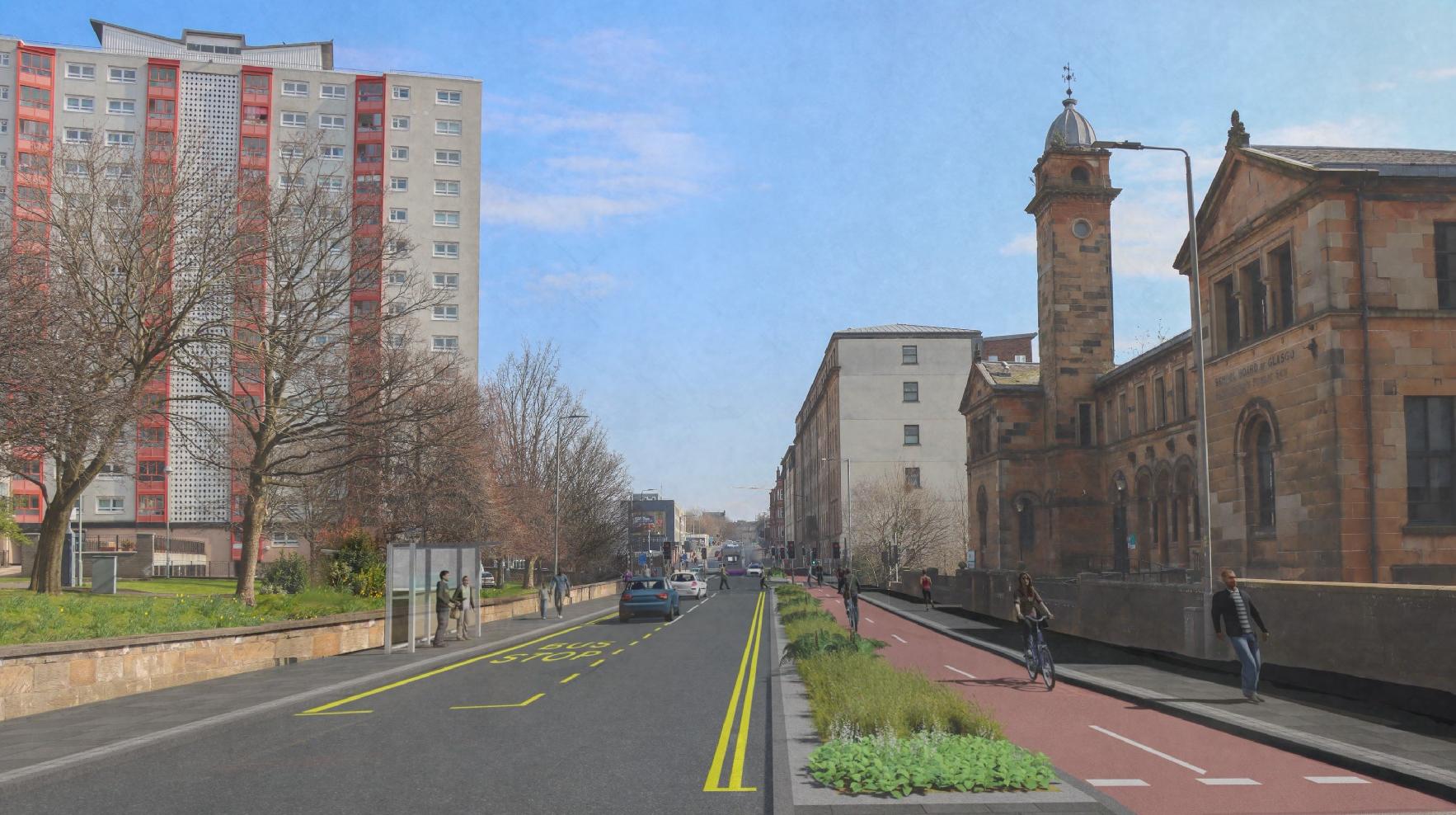
WORK is underway on the £8 million delivery of Glasgow City Council’s avenues plus scheme on Duke Street and John Knox Street in the city’s east end.
Rainton Construction is leading the work, which comes as the latest phase in the £21 million series of avenues projects to improve active travel in and around Glasgow city centre.
The council said the Duke Street and John Knox Street project will not only improve the look and feel of the area, which is currently undergoing significant development and the building of hundreds of new homes, but will make it easier for everyone to travel to and from the ‘vital’ entrance point to the city centre and the neighbourhoods beside it.
New features will include green spaces with 30 trees reducing local pollution and improving drainage, road resurfacing, the widening and resurfacing of pavements, new kerbing and cycle paths, and rain gardens.
The rain gardens in this scheme will slow down and treat highway runoff to remove pollutants prior to discharge to the Molendinar Burn culvert, which flows into the River Clyde at Glasgow Green. The sustainable approach to climate adaptation and climate resilience, using the existing historic watercourse, will help keep surface water out of the combined sewer to reduce flood risk and improve environmental water quality in the area, the local authority added.
Another Avenues Plus project – at South Portland Street Avenue project in Laurieston – will go on site later this month, closely followed by the Cowcaddens Road and Dobbies Loan project, with work beginning there in February. All three projects are expected to be complete in late winter and spring 2026.
Councillor Angus Millar, convener for climate, transport, and city centre recovery at Glasgow City Council, said, “The public realm improvement work now begun at Duke Street and John Knox Street will improve the appearance of what is a key entrance point to the city centre. Equally importantly, the new features that will be delivered by the project will make it easier for everyone to travel to, from and through the area, reduce the risk of local flooding and improve the local environment.”











